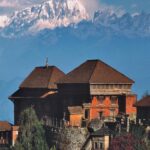21 things you must know before Kailash Mansarovar visit
Kailash Mansarovar visit is the ultimate pilgrimage destination of the Hindus. It is the seat of Lord Shiva and along with Varanasi and Chathuragiri constitutes his three abodes. Hindus have been paying visit to Kailash for thousands of years. Mythical anecdotes place the origin of the Mountain and Lake at time zero – Mount Kailash is believed to the universal fulcrum, the manifestation of the Pauranik Mount Meru, and Mansarovar the mind borne lake of Lord Brahma. Not only the Hindus but the religious significance of Kailash Mansarovar extends to three other faiths – Jains, Buddhists and Bons.
Each year hundreds of Devotees visit Kailash despite the challenges. Kailash Tour packages are sold by many travel agencies and tour operators but have they gone through the trouble of explaining to you all the nitty gritty details and must knows before travelling to Kailash Mansarovar? We have listed 21 things you must know before you plan your Kailash homage:
- The highlight of the Kailash Mansarovar tour includes the Parikrama (going around) of Mount Kailash and its Charan Sparsh (touching the feet), going around the Lake Mansarovar and performing Holy Dip in the lake.
- There are two types of Parikramas that you can undertake – the inner Parikrama and the outer Parikrama. The former is more rigorous and takes you around the Nandi Parvat while the latter covers Mount Kailash.
- One Parikrama is believed to wash away sins of seven past lifetimes while 108 Parikramas provide eternal oblivion or Moksha or Nirvana.
- The best time to bathe at the river is believed to be between 3-5 am. This period is known as Brahmamuhurta – the time of the gods.

- If Parikrama is one of your wishes of the Kailash Mansarovar visit but physical condition prevents you from walking then you can hire horses/ponies. It comes at extra pay and the amount (INR 20-30 Thousand) must be paid in cash to the animal owners at spot.
- Most visitors prefer to reach Kailash at the time of full moon. There are many reasons for doing so like being able to watch the stunning full moon over Mount Kailash and its imagery reflected on the lake, capitalizing on the auspicious time of Tibetan Buddhists – Tibetan festivals are generally celebrated during full moon and doing Kailash Darshan on the special Purnima Ratri.
- Mansarovar is not the only lake at the foot of Mount Kailash – its twin lake Rakshas Tal (demon’s lake) is also alongside the former lake. This goes hand in hand with Hindu belief that good-bad, darkness-light, positive energy-negative energy etc. are followed by one another and exist together in the cosmic maya weave. Not only is Rakshas Tal the symbolic antithesis of Mansarovar but it is also its physical opposite – its circumference characterized by unnavigable marshes and difficult/jagged edges. Lake Mansarovar is freshwater while Rakshas Tal is saline.
- Further up north from Kailash Mansarovar lies the Gauri Kunda – associated with goddess Parvati. This lake is believed to be the spot where Parvati bathed often and also gave life to Ganesha in a cave nearby.
- Many believe the twin lakes Mansarovar-Rakshastal to be the remains of the ancient Tethys Sea – that was present before the Indian Subcontinent collided with the Tibetan plateau.

- Buddhists believe Maya bathed in Mansarovar before giving birth to Siddhartha.
- The central figure of Jainism – Rishabhnath is believed to have attained salvation here.
- People of Bon Faith in Tibet believe Mount Kailash to be the centre of the earth and hold that their founder, Tonba Shenrab, bathed in Mansarovar during his first visit to Tibet.
- May-October is the best time for Kailash Tour. Temperature varies from -5 degree centigrades in night to 30 degrees in day. It is very windy in the region.
- You need to be physically very fit to undertake this journey. It is recommended you cut down on alcohol and cigarette prior to the tour.
- Mount Kailash has not been conquered till date. It is believed whoever attempts to climb atop will meet ill fate and only a person free of all sins can complete the ordeal.
- Yama Dwar or gateway to Yamalokam – where Yama, the god of death, resides is the starting point of Mount Kailash circumambulation.
- Hindus and Buddhists go around Mount Kailash in a clockwise direction while Jains and Bons go around in counter- clockwise direction.
- The base of Mount Kailash is believed to be surrounded by 8 smaller mountains – just like lotus petals surround its flower core. These small hillocks are known as ‘Astapad’ or eight steps and are sacred sites.
- There are many monasteries around Kailash Mansarovar with five major ones being Choku, Drirapuk, Zutulpuk, Selung and Gyangha.
- Kailash Mansarovar region is the source of four large rivers – Ganga, Brahmaputra, Sutlej and Indus. Myths have that these four rivers originate from the earth’s centre – Kailash Parvat, and divide the world into four parts.
- Legends have that the entire Kailash Mountain is made up of precious gems – with its four faces made of lapis lazuli, ruby, crystal and gold.











Extremely useful and amazing facts. Really great work. Thanks.